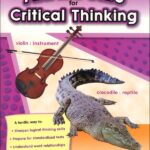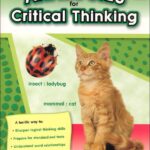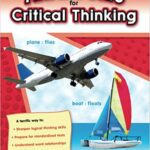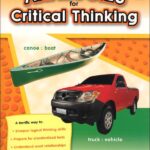Analogies for Critical Thinking 4. Approach analogies as puzzles. To solve them, students need to use cognitive processes and critical-thinking skills
Analogies for Critical Thinking 4

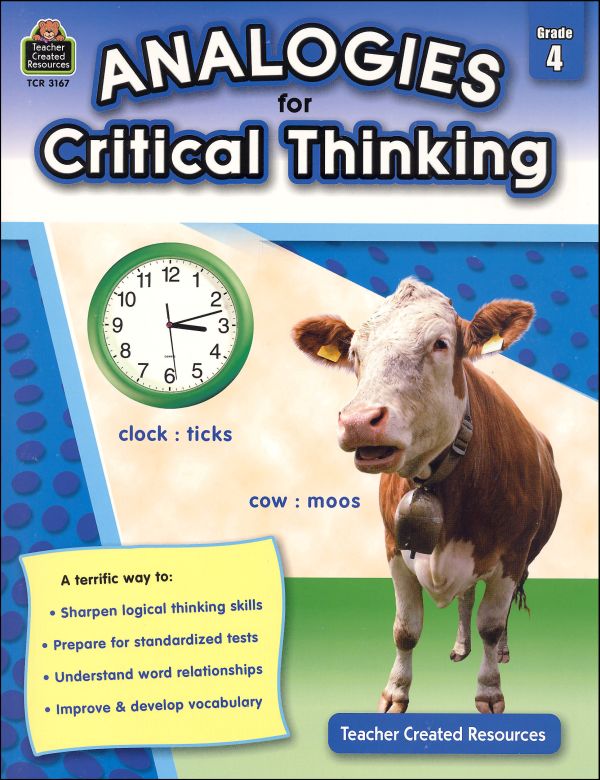
Analogies are types of comparisons that allow us to find the likenesses between two unlike things. They also make for fantastic interdisciplinary teaching tools! Students will have fun flexing their critical-thinking skills by finding connections between two pairs of words or images.
The activities in this book will help students develop, reinforce, and expand skills in the areas of visual literacy, reading comprehension, reasoning, vocabulary development, and overall attention to detail. The analogies found in this book cover the areas of math, science, social studies, health, and language arts.
Students even get the opportunity to be the teacher by creating their own analogies. This book includes blank answer sheets and a complete answer key.
Approach analogies as puzzles. To solve them, students need to use cognitive processes and critical-thinking skills. These exercises present word and/or picture relationships in several different ways. The goal is to develop skills in visual imagery, reading comprehension, vocabulary development, reasoning and test-taking.
These grade specific books have been designed to improve skills in vocabulary development, reading comprehension, reasoning, and standardized test taking through a variety of activities: multiple choice and short answer questions, analyzing analogies and writing analogies.
The analogies cover a variety of curriculum areas including math, science, social studies and language arts.
Answer Keys are found in the back of the book as well as a standardized test format answer sheet. Reproducible for individual classroom and pages are perforated for easy removal.

BROWSE THE EBOOK

IF YOU ARE INTERESTED IN BUYING THIS BOOK, CLICK ON THE BUTTON BELOW
Analogies for Critical Thinking, Grade 4 from Teacher Created Resources

WE DO NOT SUPPORT COPYRIGHT DISPUTES – USE ONLY FOR TEACHING AND LEARNING PURPOSES

